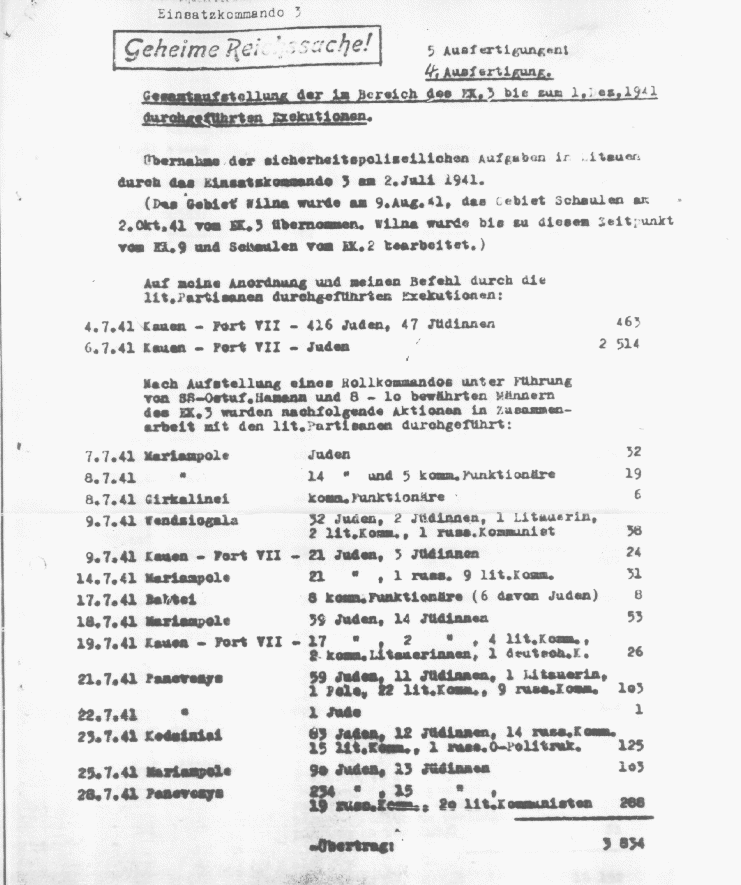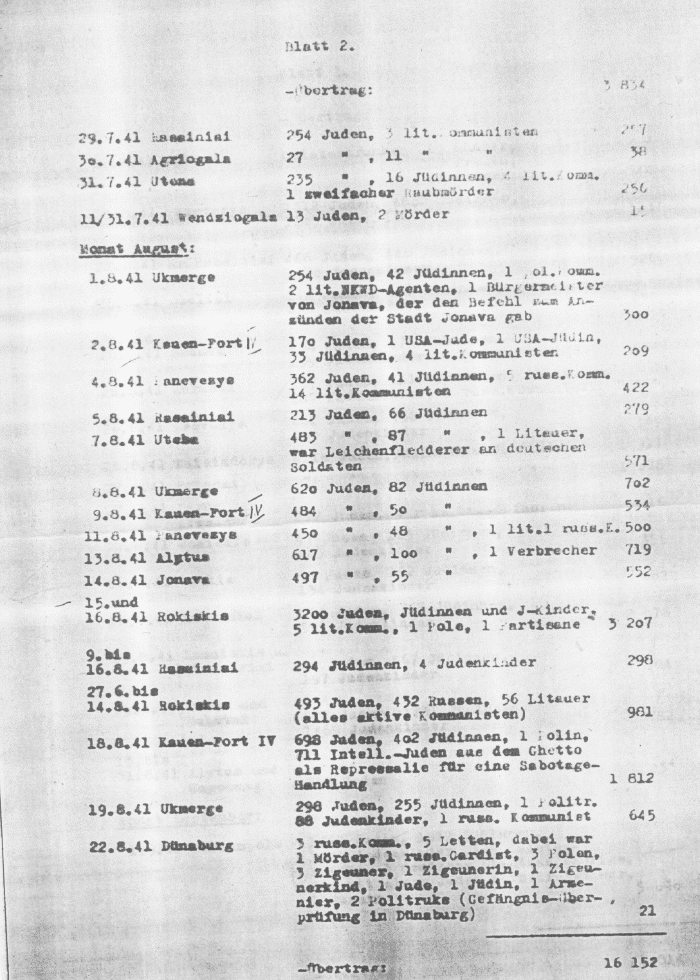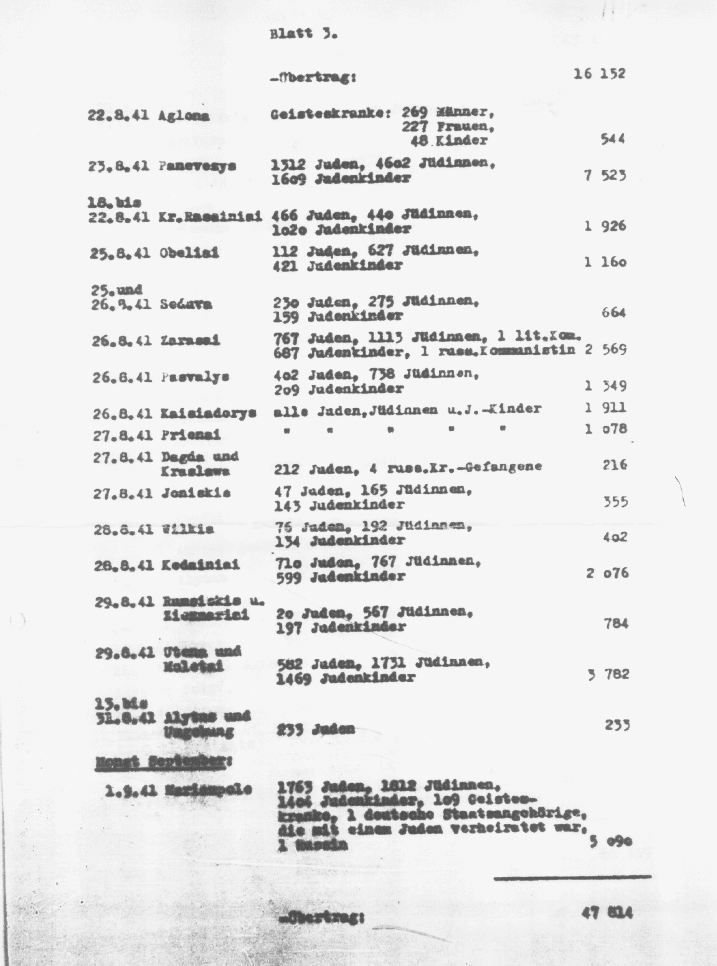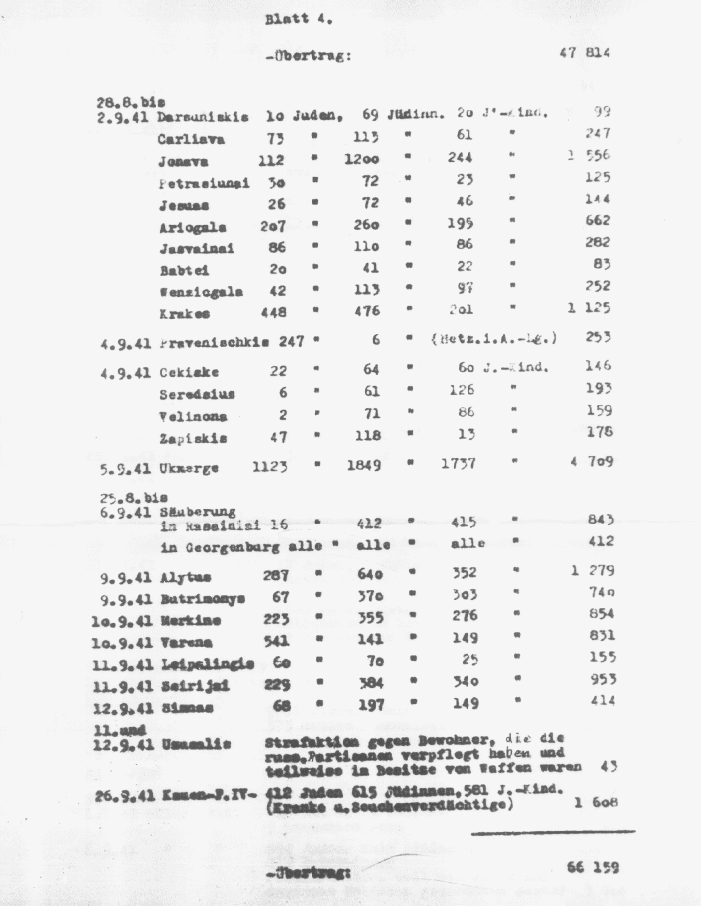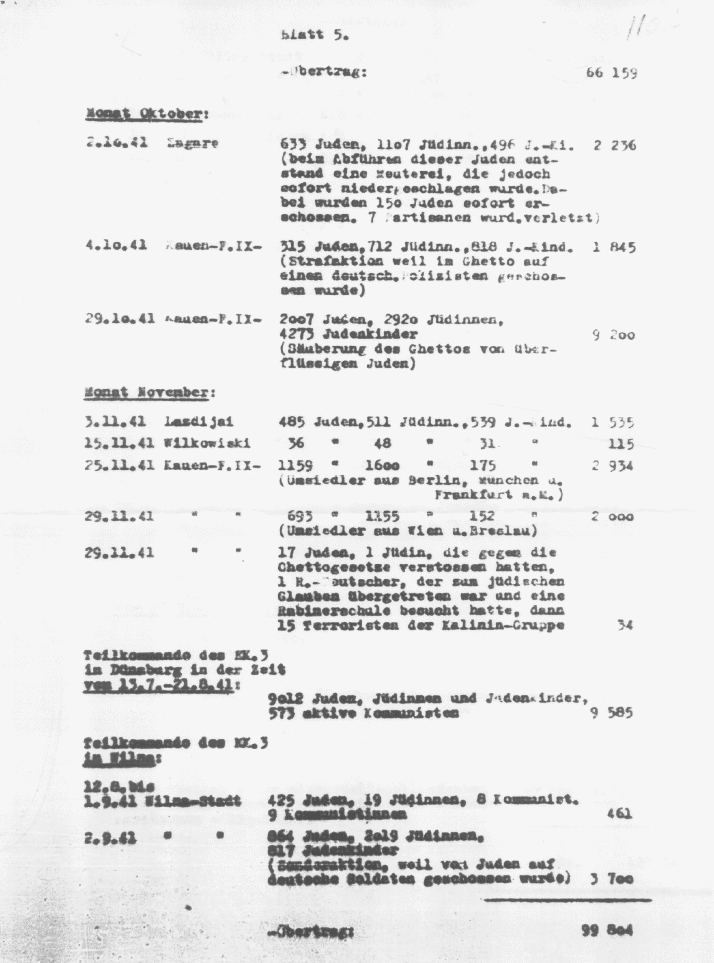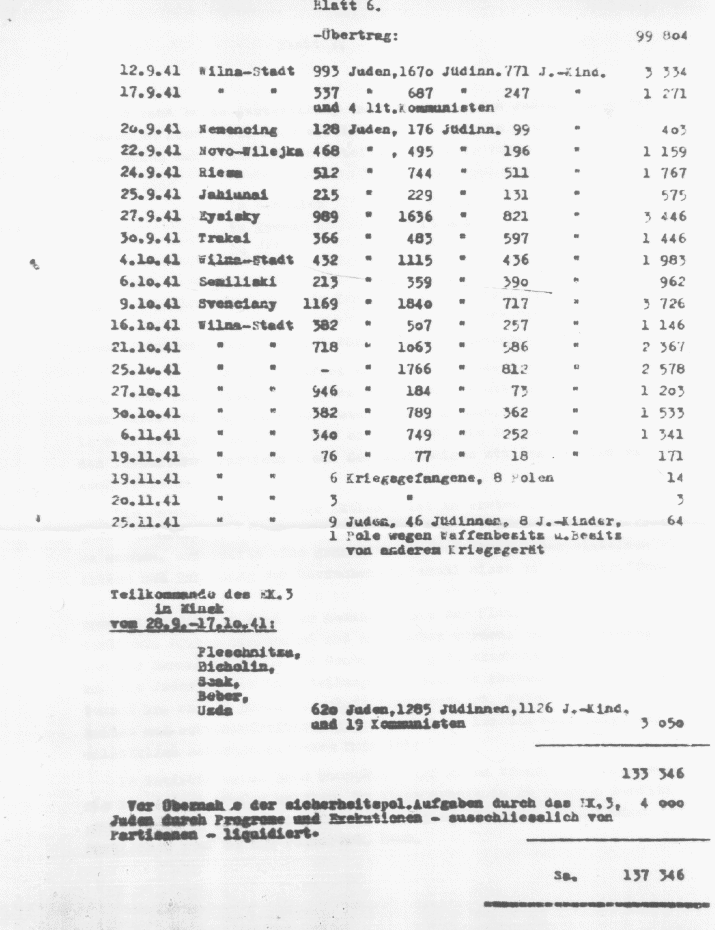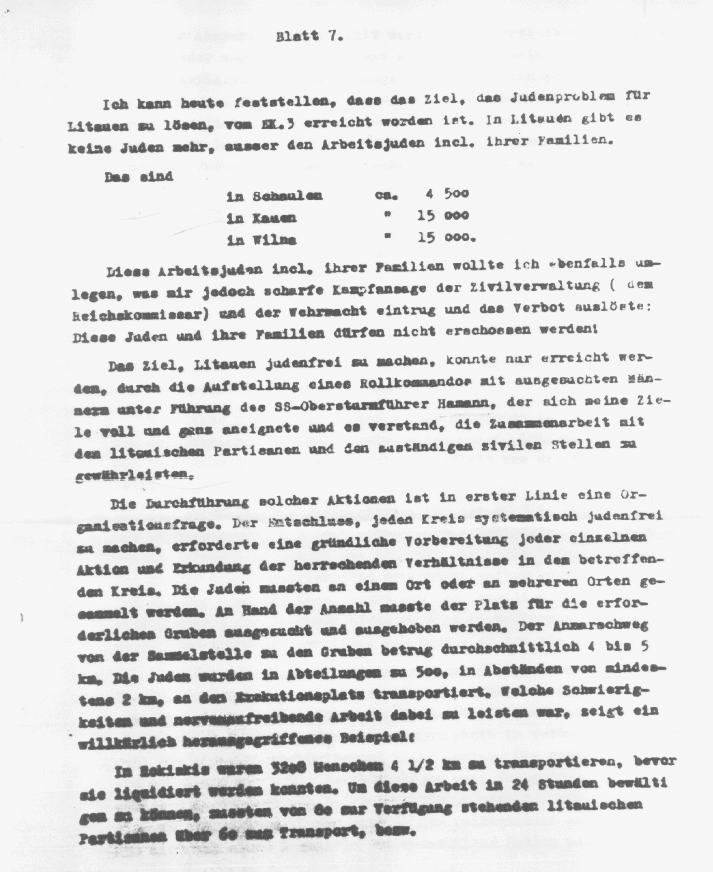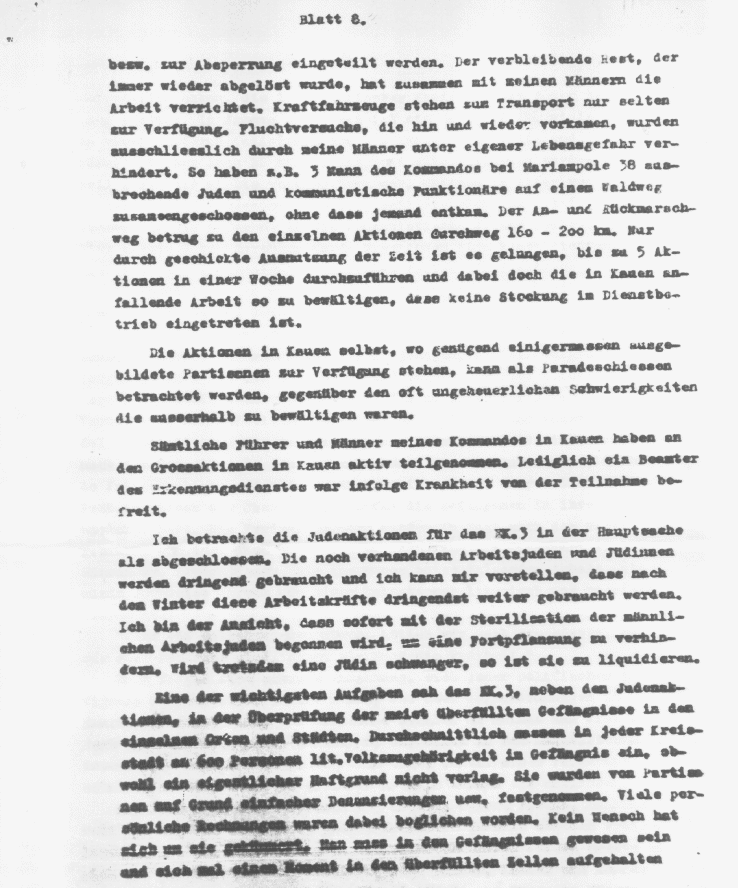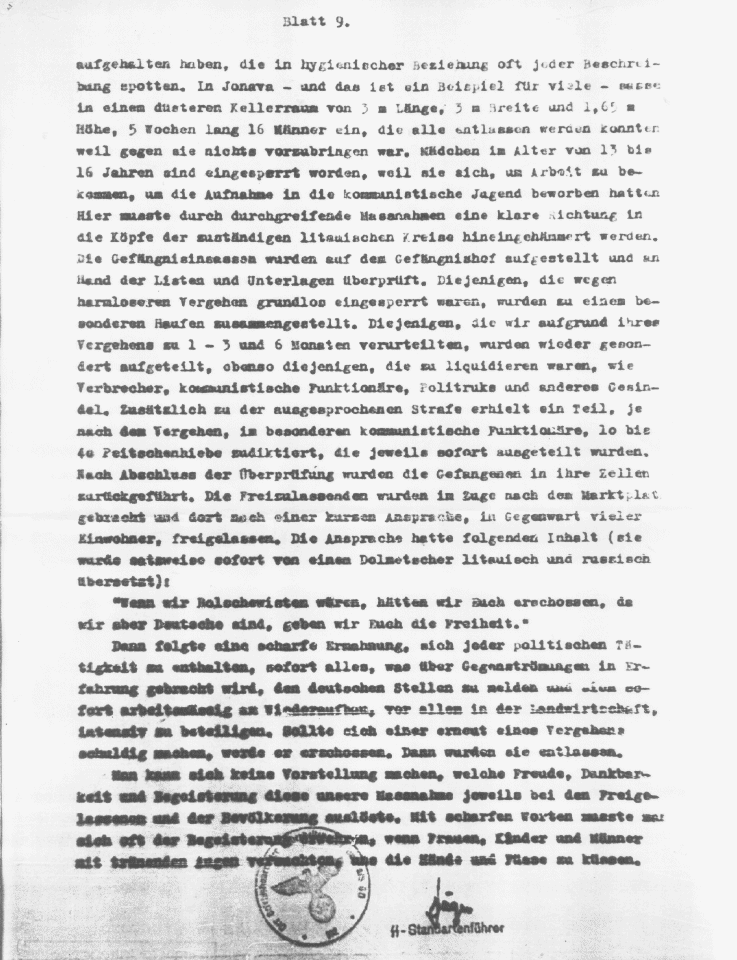Beginning on 23 June 1941, the mobile killing units, or Einsatzgruppen, that entered the Soviet Union behind the advancing front line begin sending regular reports on their activities, either by wireless or letter, to Security Service headquarters in Berlin. These reports were recovered by the U.S. Army in Gestapo headquarters in Berlin after the end of the war and became the principal evidentiary basis for the trial of Otto Ohlendorf and other Einsatzgruppen commanders at Nürnberg.
The “Jäger Report” is a statistical summary of the killing carried out by the Einsatzkommando 3, a unit of Einsatzgruppe A, between 4 July and 25 November 1941 in the towns and villages of Lithuania and Latvia. It was written by the unit’s commander, SS-Standartenführer Karl Jäger (1888-1959), a member of the NSDAP since 1930 who was 53 years old at the time. As historian Ronald Headland points out, the “Jäger Report” is exceptional among these horrific documents for its “cold-blooded horror” and the “mind-boggling depravity” of its meticulous, morbid cataloguing. “In no other report,” Headland observes, “do we get as detailed a picture of the steady accumulation of victims.” At the conclusion of his report, on page 7, Jäger stated that “the aim of solving the Jewish problem for Lithuania has been achieved by Einsatzkommando 3. There are no more Jews in Lithuania apart from work-Jews and their families,” approximately 35,000 in number, still living in the towns Siauliai, Kaunas, and Vilnius. Note the change that took place at the end of July and the beginning of August: Jäger’s Einsatzkommando begins shooting Jewish children, in addition to adult men and women, and the overall rate of killing increases by a factor of ten: from a total of 4,400 in July to 47,906 in August. Karl Jäger committed suicide in June 1959 while awaiting trial.

Image: Jewish men are forced to dig their own graves before being executed, summer of 1941. Source: State Archives of the Russian Federation, courtesy The History Place.
